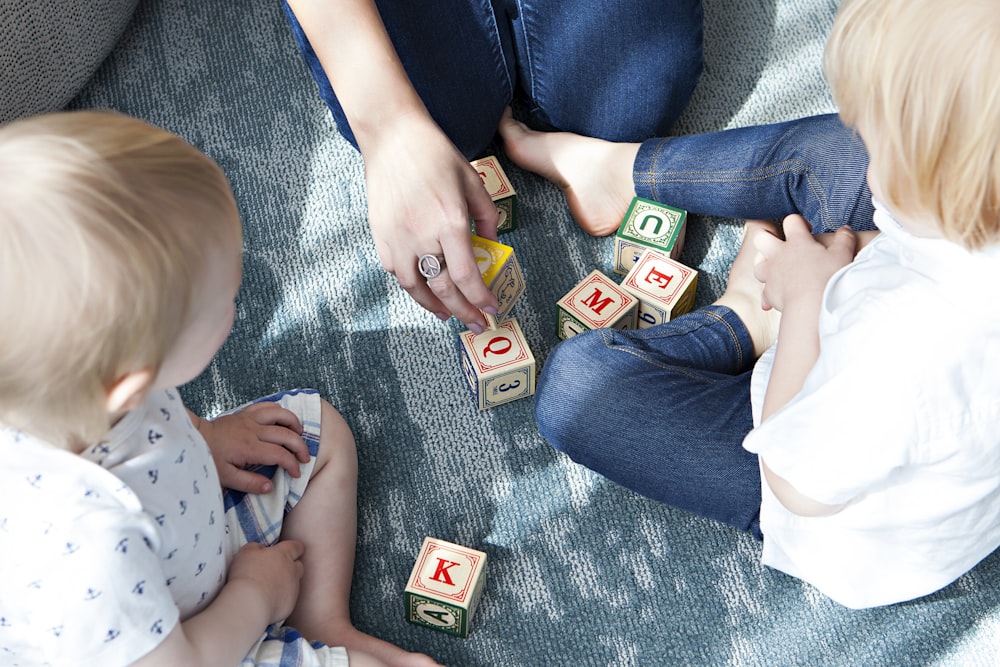When children play with purpose, significant learning occurs. All play is learning, but when a child plays with purpose, it means there are specific learning goals the parent or teacher has in mind. We live in a digital age, and many preschoolers love to play online games. As a parent, you want ways to reinforce the skills and knowledge they’re gaining by playing Kneebouncer games with toys and activities. Play with purpose connects the concepts and skills they’re learning when they play with our fun, interactive games.

So, whether you’re tackling the challenge of teaching your preschool-aged child full-time or are integrating teachable moments at home and on the go, Kneebouncer games are a great way to reinforce preschool learning concepts! Read on for tips and advice to enhance your child’s purposeful play!
What is Play With Purpose?
Play with purpose or structured play is engaging in play that has a specific learning objective in mind. For example, you may play a game of Candyland to help your child work on color recognition. Playing with purpose doesn’t mean your child will only learn that one objective; it is a way to focus on a specific skill or developmental goal.

Structured play is what preschool teachers do daily. While a glimpse of a preschool classroom may seem noisy, unstructured, and chaotic, much of what you see is intentional. Teachers place specific toys and items on their shelves, plan activities that reinforce the learning concepts, and lead children through learning with questions, discussions, and problem-solving opportunities. It’s something you can do at home too!
Tips for Playing with Purpose
Playing with purpose requires some advanced planning, but all play creates learning opportunities. To create structured learning opportunities for your child, think about what skill or developmental area you want to focus on, then find a game or activity that fits that goal.
Gently lead your child while playing by asking open-ended questions about the learning objective. For example, if you’re focusing on shapes. “Abby, can you hand me the triangle?” If you’re focusing on colors, “Which is the pink car?”
Structured Play Examples:
- Colors and Counting: Candyland, drawing paper and markers, painting
- Memory and Comparison: Match Games, scavenger hunts, what’s missing?
- Problem-Solving and Spatial Awareness: Puzzles, LEGOS, magnet tiles, tangrams
- Social-Emotional: Dramatic play, role-playing, puppets, dress-up clothing, dolls
- Letters: Alphabet BINGO, letter magnets
- Shapes: Patterns, Shape puzzles, blocks, tangrams, magnet tiles
Connecting play to Kneebouncer games is easy! For example, in the game Sea of Colors, talk to your child about the fish’s colors as you see the fish swim. Are they swimming to the left or the right? Which color of fish came first? Which colored fish came last?

You can use any Kneebouncer game to play with purpose. Choose the learning concept you wish to focus on and pick one of our games that develops that skill!
Updated February 29, 2024, by L. Elizabeth Forry









